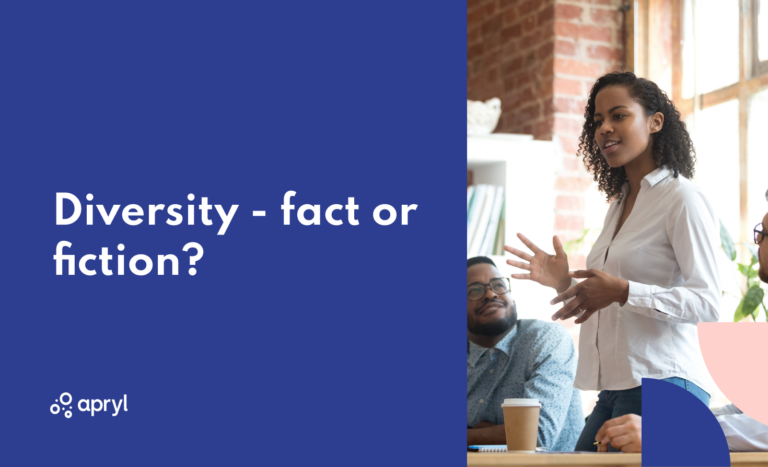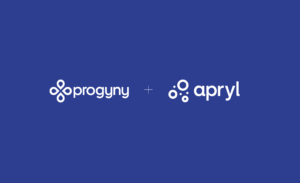The pressure on companies is high – rainbow flags are raised, D&I managers are hired and committees are formed to promote equality as well as diversity and to show the outside world: we care. Businesses all over the world are actively promoting more diversity, equality and inclusion – at least that’s what it seems like. But do companies really foster diversity and thus equal opportunities for all, regardless of age, gender, sexual orientation and identity, disabilities and social and cultural background? According to the latest studies: not really.
Diverse teams are considered more innovative, tolerant and successful. Market research results from Gartner show that people with different backgrounds, gender, sexual orientation and experience also bring different strengths to the table that are essential for long-term success, especially in a globally interconnected world like ours. Diversified companies not only have a better image, they are also much more attractive for talents. To continue, according to a recent study by the Reward & Employee Benefits Association in partnership with Mercer, more than 70% of companies surveyed say that D&I is among the top 5 priorities of their boards – a great first step to create awareness around the importance of D&I. However, current studies and surveys also show that there is still a lack of actual action and change.
Just to name a few of the challenges companies as well as employees are facing right now:
- People that are responsible for diversity often have to do the associated tasks in addition to their actual job.
- Many companies lack the necessary information about their employees, such as LGBTQI+ belonging, to make any informed decision at all.
- Budget is only provided in rare cases to actually establish the needed requirements for change.
So what is it that companies actually do to promote diversity and inclusion?
Let’s take a closer look at Gender Diversity:
Many companies still face the challenge of hiring more women, both in the general workforce as well as in leadership positions. The average number of women in leadership positions in the EU in 2020 is still just over 30%. In many sectors, such as tech or consulting, the percentage of women is usually much lower. Yet companies do little to give women relevant incentives to apply.
Equal pay should be a rule and not an exception these days. The offer of part-time positions or even job-sharing should also be expanded in order to still be able to offer women with children exciting positions with responsibility.
However, the support offered by the company in the form of benefits will still be one of the most important factors in the decision making process for most women. Inclusive benefits that balance out inequalities will be even more important in the future – not only in terms of gender, but also for the entire LGBTQ+ community. It is not a matter of offering everyone the same, but of creating the same conditions for everyone.
What could inclusive benefits look like?
Since starting and caring for a family is still mostly considered the responsibility of the woman, family-related benefits are an important part of the overall offer. Therefore, it should never be an either or decision to have a family or a career. The following benefits can support parents to balance family and career between both of them:
Maternity Leave:
Although maternity leave after giving birth is common in most countries, the length of leave and the amount of money available varies enormously. While women in Bulgaria, for example, are allowed to take maternity leave for around 58 weeks, in Germany or Sweden it is only 14. In addition, Bulgarian women receive 90% of their salary during the entire period while in other countries there is a sharp drop in salary for women after maternity leave. A first important step would be a standardised regulation to support families during this time without putting time or financial pressure on them. .
Parental Leave:
The average duration of parental leave (at least partially paid) is 55 weeks. The most generous support is offered by France and the northern countries while southern Europe offers the least. While parental leave is increasingly available to both parents, on average less than 10% of fathers, for example in the UK, take more than two weeks off. This is mainly due to the fact that in large parts of Europe there is still a very traditional image of the family, but also because many men are not willing to carry a larger share of the unpaid work. However, this is where companies have a significant impact on behavior change. Iceland for example gives parents up to 9 month of paid parental leave equally divided by men, women and the both of them. Months not taken are lost, so both parents are required to actually use and share the provided time.
Provide a more inclusive benefits program
One in eight people or every 6th couple struggles with infertility. While it is great to support parents after the birth of a child, it can be equally important to support all those who cannot start a family on their own. Fertility and Family forming benefits can have a major impact for woman as well as men, but also for same-sex couples or singles. While a company sends a clear message that all employees are supported in starting a family, regardless of age, gender, family situation, sexual orientation or financial means, employees can benefit from an enormous relief.
This means that not only are all employees able to start a family, but women in particular are offered enormous opportunities. From a purely biological point of view, men have an advantage over women when it comes to starting a family. Men are capable of fathering a child up to a high age while women, on the other hand, have the greatest chance of pregnancy up to the age of 35. Due to academic training and early career years, there is only a small window of time to start a family. But what if there is no partner, the right time has not yet come or a woman wants to start a career first? Supporting female employees in these critical phases can be a big incentive when it comes to choosing a new employer for highly qualified women.
Even if inclusive benefits do not solve all challenges, they are an important part of an overall D&I strategy. Do you want to learn more about inclusive benefits? Reach out to us!
Find out more on Diversity Quotas: Just statistics or real inclusion? If you’d also like to learn more about how implementing fertility benefits can improve diversity, equality and inclusion in your organisation, get in touch and find out how Apryl can help.
General advice posted on our blog or website or app is for informational purposes only and is not a substitute for medical advice, diagnosis, or treatment. Apryl makes no warranties regarding treatments, coverage, or chances of success.




